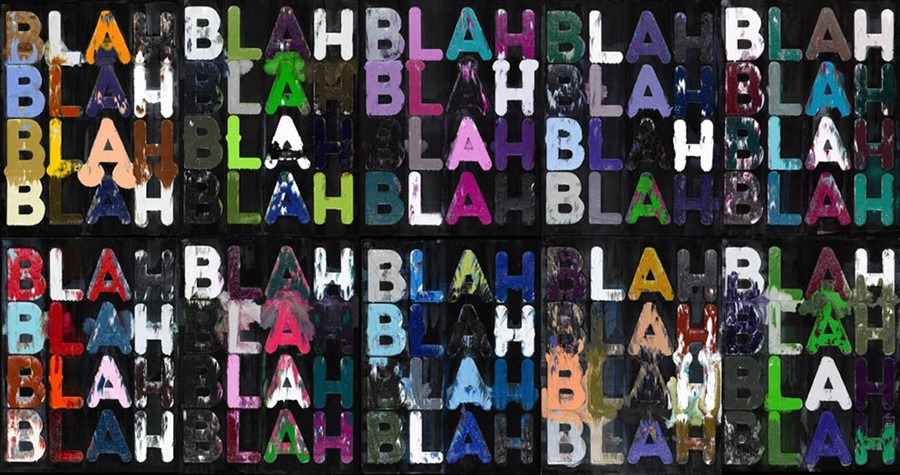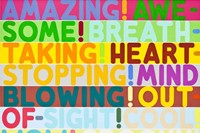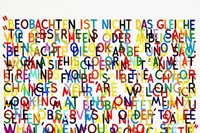‘Blah, blah, blah,’ are the words that greet you as you enter Mel Bochner’s exhibition at the Whitechapel Gallery, the artist’s first major survery show in the UK...
‘Blah, blah, blah,’ are the words that greet you as you enter Mel Bochner’s exhibition at the Whitechapel Gallery, the artist’s first major survey show in the UK. But this painting is far from blah: the words are repeated over and over again in shouty block capitals dripping with colour on tactile velvet. It’s an abrupt and exuberant salutation that almost belies the intellectual rigour behind it. For over four decades, Bochner has explored systems of meaning in his work, looking at language, typography, and colour, among other things, inviting us to think about the way each communicates meaning and how we in turn process it.
One of the founding fathers of conceptual art, Bochner emerged in the 1960s alongside luminaries Sol LeWitt, Eva Hesse and Robert Smithson. Born in Pittsburgh to a sign-painter father, Bochner studied fine arts at the Carnegie Institute of Technology. Following stints in Mexico and San Francisco, Bochner moved to New York in 1964 and worked as a guard at the Jewish Museum before becoming an artist. One of his most important early works was Working Drawings and Other Visible Things on Paper Not Necessarily Meant To Be Viewed as Art (1966): bound Xeroxed copies of collected drawings and notes by friends including Donald Judd and John Cage and placed on pedestals in a gallery, now considered a paragon of 60s conceptual art.
"Blah, blah, blah...is an abrupt and exuberant salutation that almost belies the intellectual rigour behind it."
At the Whitechapel, seminal early work Theory of Painting (1970) takes pride of place. Inspired by Pollock’s method of painting canvases on the floor (and a photo of Matisse standing on a carpet of newspapers in his studio that Bochner chanced upon), the piece features blue squares spray-painted onto sheets of newspapers in four arrangements on the floor, responding to four variations of the words Cohere/Disperse printed on the walls. Being a conceptual work, it can be made anew each time it’s exhibited and is always composed of newspapers published in the city in which it is being installed. As the eye takes in the various elements, seeking meaning in the different arrangements, the work increasingly feels like some sort of game, whose aims and rules remain a mystery.
Play and perception are important to Bochner: painting If the Colour Changes (#4), 1998, features a Wittgenstein quote about colour and observation printed in overlapping German and English in rainbow colours, confounding any immediate, coherent reading. Elsewhere, Bochner’s more recent Thesaurus paintings play with the format of Roget’s model, featuring synonyms for expressions such as ‘Master of the Universe’ and ‘Amazing!’ in candy-coloured lettering. The interplay of meaning, colour and composition in these works produces a dense and entertaining cacophony: the walls are loud with overlapping words, colours and ideas.
Mel Bochner: If The Colour Changes is at the Whitechapel Gallery until December 30 2012.
Text by Laura Allsop



